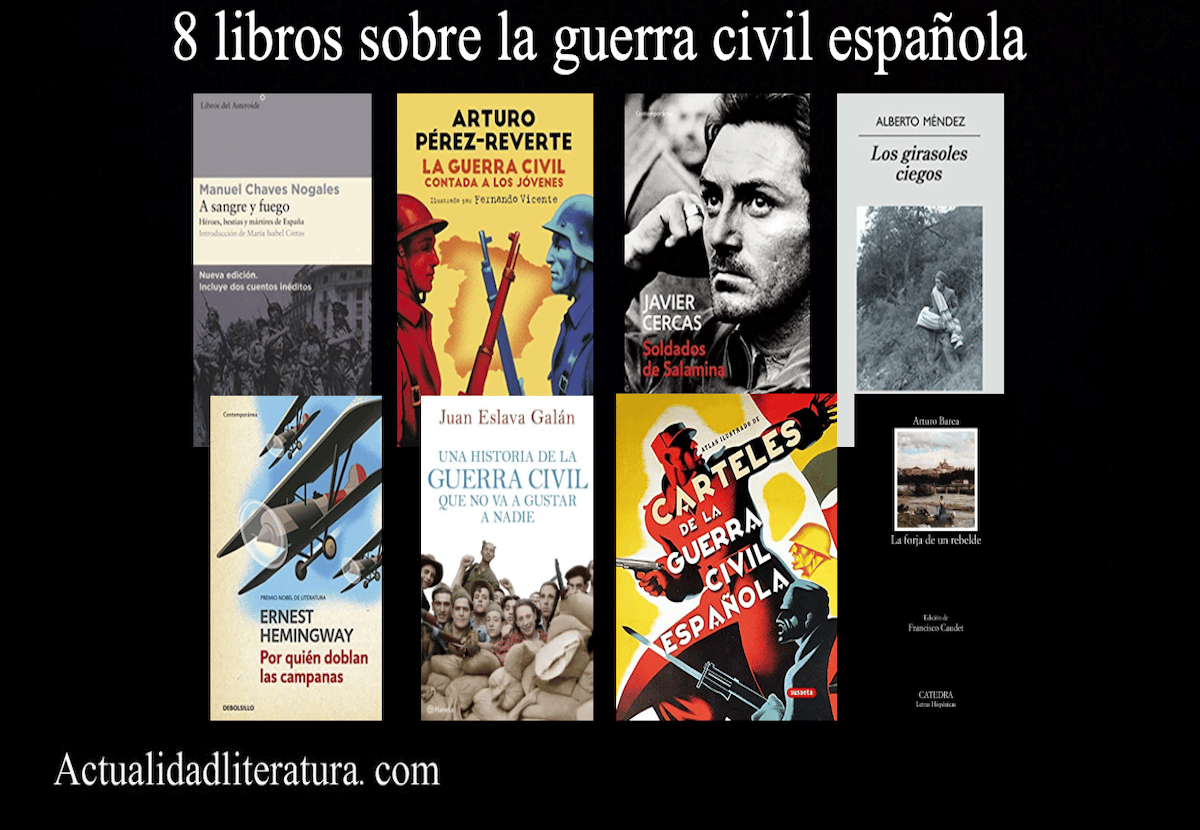
There are many works on the conflict that took place in Spain between 1936 and 1939, literary, informative and audiovisual works. Today it is a topic that continues to arouse interest and controversy within our borders and beyond them as well.
It is difficult to choose between all of them, especially if what you want to find is rigor and impartiality; and even more so when public opinion continues to disagree on what happened 80 years ago. No ideological motivation from here we show the approaches of some authors in eight books on the Spanish civil war, between novels and essays.
Selection of books on the Spanish civil war
To blood and fire. Heroes, Beasts and Martyrs of Spain
Manuel Chaves Nogales's book is perhaps one of the most read, consulted and commented works on the civil war. The nine stories that compose it have great recognition and are based on true facts that the author knew firsthand. However, he knows how to distance himself from them with the journalistic gaze of a great observer who, at the same time, empathizes with the characters and people who suffered the harshness of the war firsthand. Also, the prologue is considered one of the best texts ever written on the civil war, understanding and knowing how to convey what happened.
The civil war told to the young
A work by Arturo Pérez-Reverte that teaches youth the drama of a war, albeit in an aseptic way and with the help of illustrations. It is an instructive text that serves to explain the context of the conflict and how important it is to understand it and, above all, not to forget it, so that nothing like it can ever be repeated. Pérez-Reverte remains objective and distant in this work whose objective is to offer a pedagogical and understandable vision of the civil war.
Soldiers of Salamis
This novel by Javier Cercas is another indispensable text of the XNUMXst century; and as such it is considered one of the most important books of recent decades. It narrates the real events around the figure of Rafael Sánchez Mazas, founder of the Falange, who by the intervention of Providence or simply by luck, was saved from being shot by the Republican side during the civil war. He would later become a Francoist minister. But the most surprising thing about this story is that in fleeing from him a soldier spares his life after having him shot in a frontal encounter. The story is carried out by a journalist who decades later, already in democracy, discovers the amazing story of Mazas.
Blind Sunflowers
Alberto Méndez builds his novel from four stories full of pain and desolation in post-war moments. The main characters are a Francoist captain, a young poet, a prisoner and a religious. All the stories ooze tragedy and hopelessness. The title of the work means the antonym of light and sunflowers that seek the sun to grow and fill themselves with life. On the contrary, a blind sunflower is a dead sunflower. Blind Sunflowers is a splendid novel and one of the most celebrated of its kind.
For whom the Bell Tolls
From the hand of Hemingway comes the foreign view of the Spanish Civil War through this novel. It tells the story of Robert Jordan, a brigade member who arrives in Spain to help the Republicans to blow up a bridge of vital importance in the attack against the rebels, the Francoist side. Upon his arrival, he will understand the threat of war and discover love for a woman, María, with whom he will unexpectedly fall in love.
A history of the civil war that no one will like
This book is a narrative, though not a novel, since Juan Eslava Galán recounts true events with real characters, some known, such as Franco in his youth and at the dawn of the war, and others anonymous. It should be noted that it is a book that refuses to position itself or position the reader towards any side or ideology, leaving the public to draw their own conclusions. It is also tried to dispense with irrelevant data that disturbs the reading; on the contrary, what this book is full of human stories, some more serious, and others that seek refuge in humor. As always, Eslava Galán shows a sharp style in his work.
Spanish civil war posters
civil war posters Spanish is a visual display and a memory book of our history. In this work we can find the posters created by the two sides with propagandistic concerns, to move the spirit and the ideology towards one of the two causes. It is a careful selection of proclamations in chronological order and that can provide criteria and reflection on what happened during the 30's in Spain; a book with which it is also possible to be surprised.
The forging of a rebel
The trilogy of Arthur Barea is composed of the forge (1941) The route (1943) and The flame (1946). It is a republican vision of the conflict in which the author autobiographically describes his vision and experience before going into exile in England. In the second and third part, the Annual disaster and the war in Morocco are narrated, as a background to the Spanish conflict; and the last part is the development of the civil war. In the first book the author explains his transformation from youth to adult life. The set of novels are a classic contribution to the literature of the war of the two Spains.








"Fire Line" by Arturo Pérez Reverte was missing.
Diana of course! Another important 😉